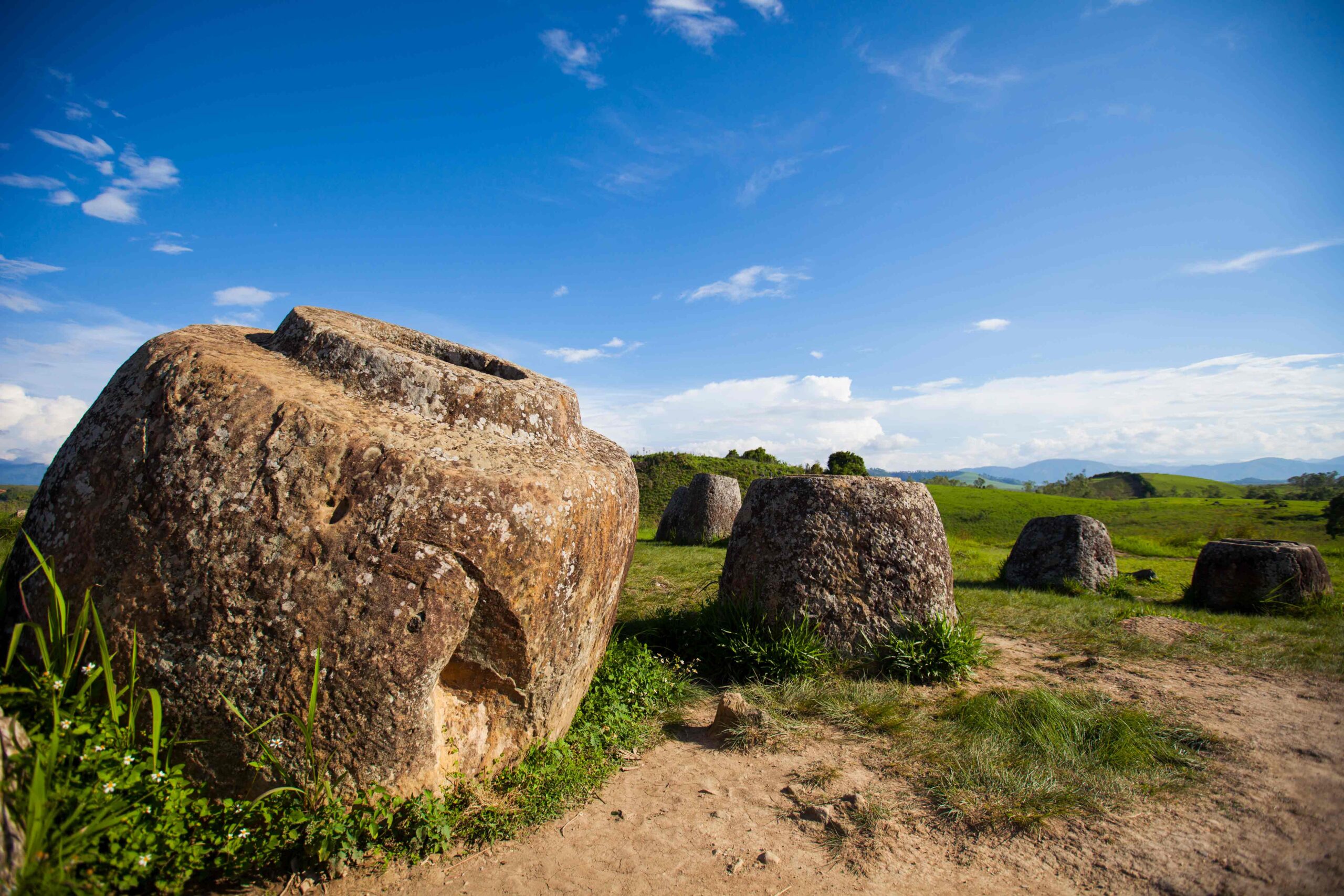Explore the region’s culinary and archeological wonders,
From the glories of the past to the tragedy of war, Xieng Khouang is a province with a fascinating history and engaging local culture. This is thoughtfully presented in the province’s museum, and it is here that you should begin your stay in the town. The museum, which is unquestionably the best in Laos, provides the context and insight that will ensure you get the most from your trip. This is achieved not only through a beautifully curated collection of artifacts and textiles supported by detailed information in Lao and English but also with four short films, one of which includes moving personal accounts from those affected by America’s secret war and the shocking amount unexploded ordnance that still litters the province (Laos holds the unfortunate accolade as the most heavily bombed country in the world per capita and much of the two million tonnes of cluster bombs dropped, rained down across Xieng Khouang Province). The museum is located at the intersection of Road 30 and Road 9 and is open Tuesday to Sunday, from 9 a.m. until 4 p.m.
When planning your trip, be aware that although Xieng Khouang has enough attractions to hold a visitor’s attention for several days, these are spread out, with some requiring you to travel up to 30 km, so arrange your own transport (scooters are available for rent in the town) or a guide and driver is necessary.
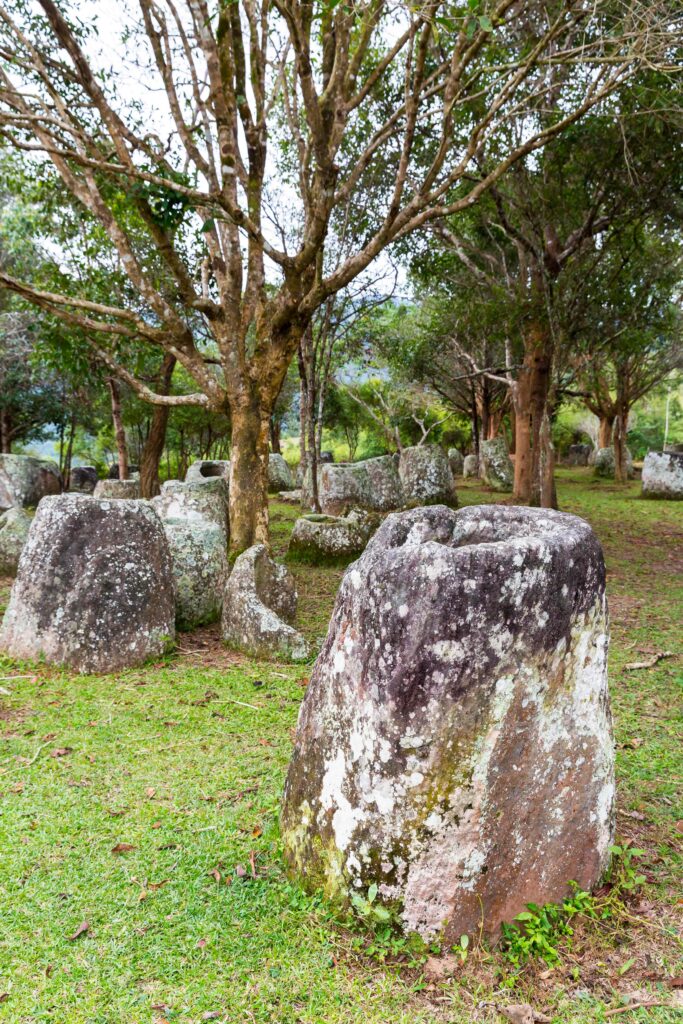
The Plain of Jars
It’s almost a century since French archaeologist Madeleine Colani’s (1866 – 1943) pioneering fieldwork and resulting two-volume monograph, The Megaliths of Upper Laos, brought the Plain of Jars to the attention of the wider world, yet still it remains an enigma. Walk up a hillside on a crisp cool season morning until you are suddenly confronted by huge lichen-covered stone jars, some standing, others fallen or embraced by tree roots, and it is easy to understand why. The jars are a sight to behold and encourage the imagination to run wild with thoughts of how and why these hand-hewn vessels were made. Local legend tells of a race of giants that used them for brewing rice whiskey, but Colani’s work at the Bronze Age sites reached a more sober conclusion; that the vessels were ancient funerary jars. Further work carried out from 2016 to 2020 by the Plain of Jars Archaeological Research Project (a joint Australian-Lao research initiative; plain-of-jars.org) unearthed numerous artifacts, including shards of pottery and bangles. The jars are distributed across 91 sites, from lone jars to groups of 200 or more, but Sites One, Two, and Three are the most visited and easily accessible.
On a day excursion to Site One can also take in the huge Buddha at Hai Hin Mixayaram temple, while Sites Two and Three are not far from Ban Napia where villagers supplement a meager income as rice farmers by casting spoons from bomb casings.
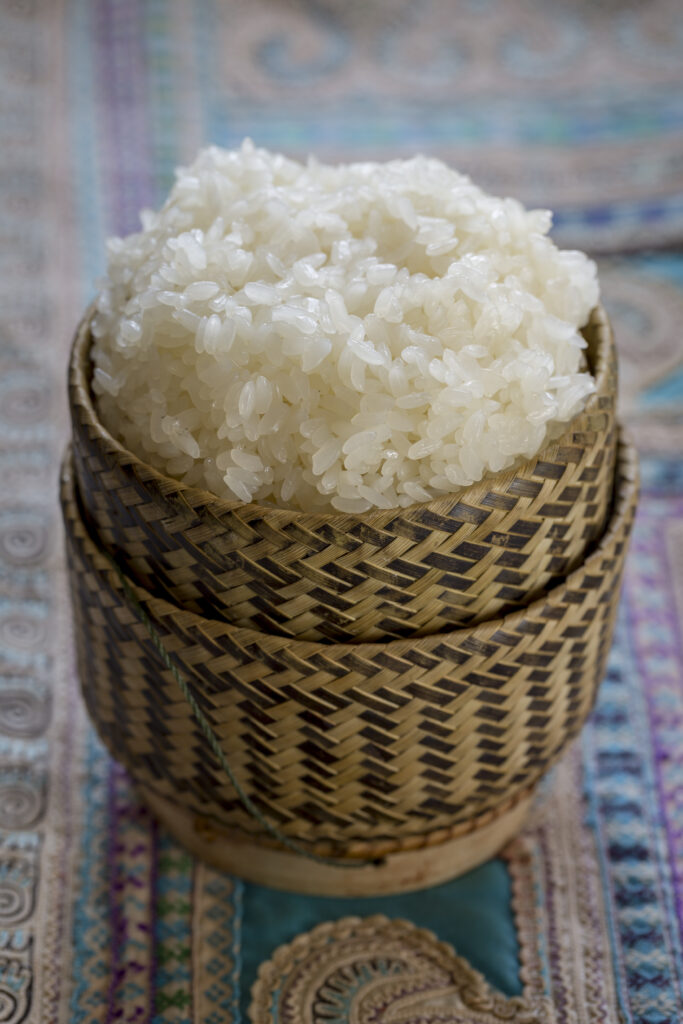
‘Little Chick’ Sticky Rice
Xieng Khouang’s other claim to fame is for growing the country’s most highly prized rice, a traditional variety known as khao kai noi or ‘little chick’. This short-grained, fragrant sticky rice was the first Lao product to be awarded Geographical Indication status. Doi Ka Noi restaurant in Vientiane also succeeded in getting khao kai noi registered with the Slow Food Foundation for Biodiversity’s ‘Ark of Taste’, an international catalog of endangered heritage foods that are sustainably produced, unique in taste, part of a distinct eco-region, and deemed worthy of protection. Many subvarieties are grown including khao kai noi leuang, yellow (the most widely grown variety), khao kai noi dam, black striped, khao kai noi daeng, red, and khao kai noi lai, striped. The color refers to the outer husk, not the grain. Each variety is known for its different characteristics of aroma, softness, and taste. The rice also commands a premium price which unfortunately means that it is seldom found on restaurant menus. It is also used to make desserts, rice whiskey, and in the production of Beerlao Gold.
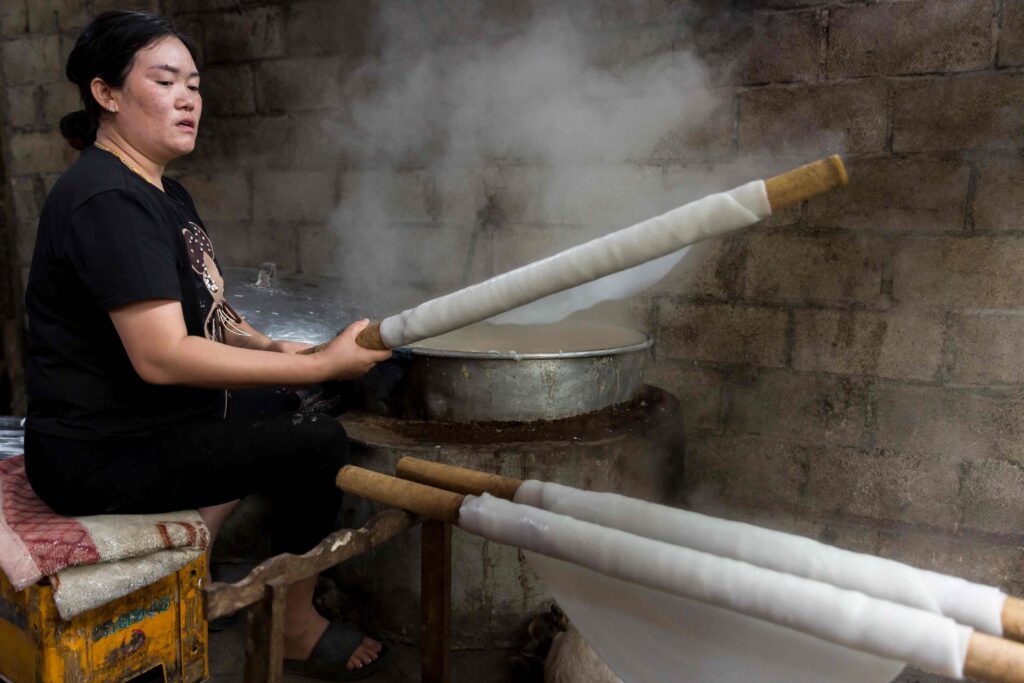
Noodle village
Khao kai noi is also the preferred rice for making noodles. For a rewarding day, rise early and drive 25 km to Ban Na Ou where each household produces between 50-100 kg of fresh noodles each day. It’s advisable to get there before 9 a.m. if you want to see the making process. It’s fascinating to watch as a rice flour slurry is poured onto fabric stretched tight over a cauldron of boiling water, then spread evenly across the surface and covered with a lid to steam for a few minutes until cooked. The noodle sheets are deftly removed with a piece of bamboo and then transferred to racks to dry in the sun before being cut to size.
Another five kilometers further from Ban Na Ou is Meuang Khoun, where you can visit the remains of Wat Phiavat. The ancient temple is said to date from 1564 but was partially destroyed by American bombs in 1966. Nearby, there are also two hilltop stupas and French colonial-era ruins.
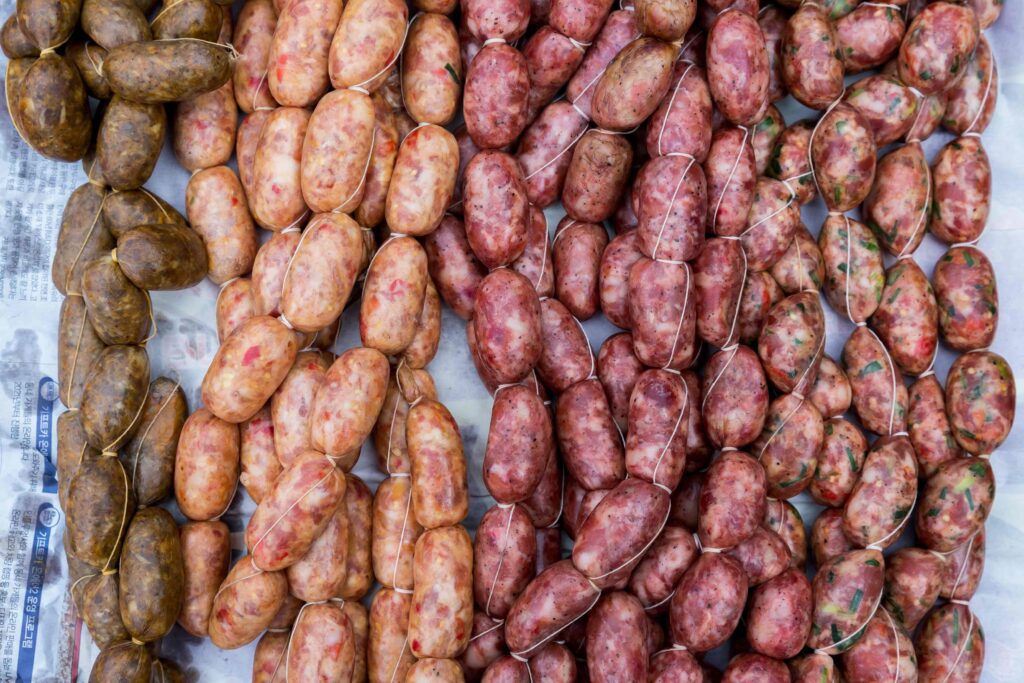
Chicken soup for the soul
Xieng Khouang has a large Hmong population, and their culinary influence can be seen in the markets. Those interested in local flavors should look out for bouquets of herbs that are used in traditional Hmong chicken soup. The dish, which is considered medicinal, uses up to a dozen herbs and various types of spinach including mugwort, lovage, and Okinawa spinach. Xieng Khouang is also famous for delicious sausages. The best, along with jeo dipping sauce, and dried and smoked meats, are sold by Mae Sorn every afternoon from her shop on Road 9 (02099411510). Coffee lovers should also be sure to return home with hand-roasted beans from Lone Buffalo, a student coffee co-operative created to help youngsters develop practical business skills. Their ‘Bombs to Beans’ brand is available at several outlets in the town. www.lonebuffalo.org
Lao Airlines has daily flights to Xieng Khouang from Vientiane.
Text & PHOTOGRAPHS BY Mick Shippen



 ລາວ
ລາວ